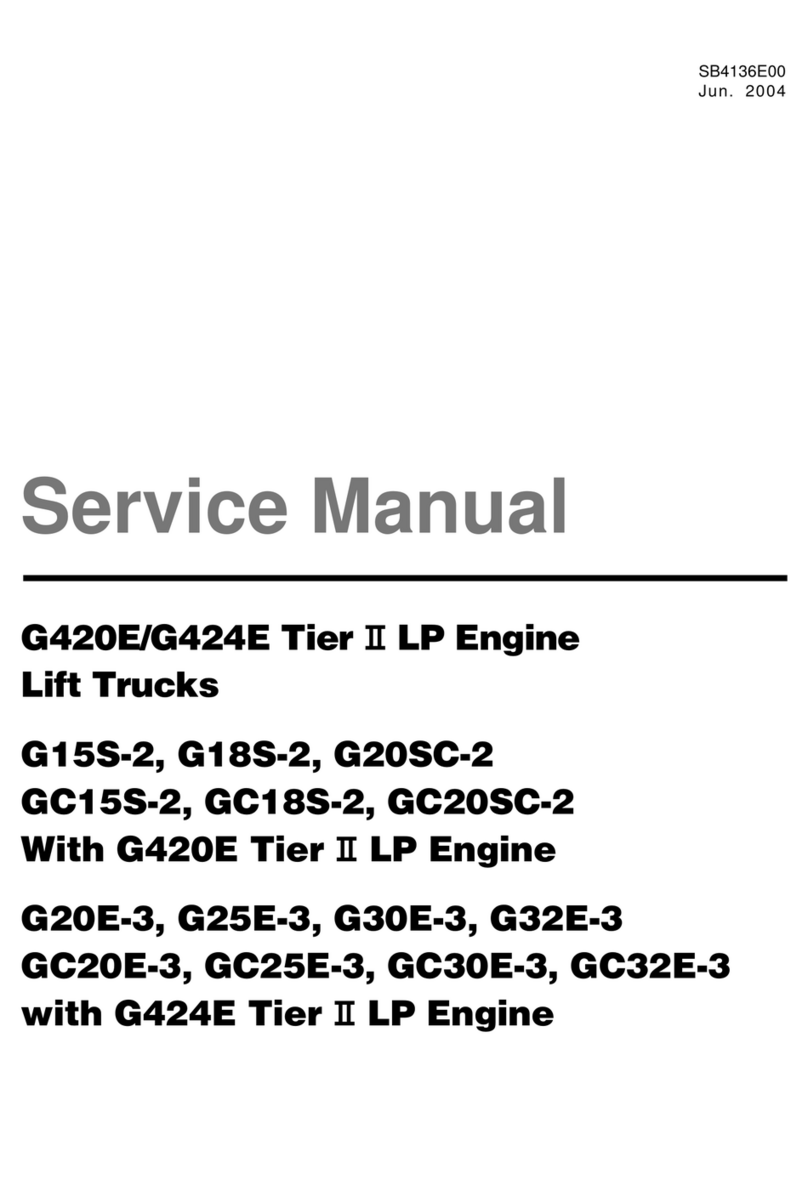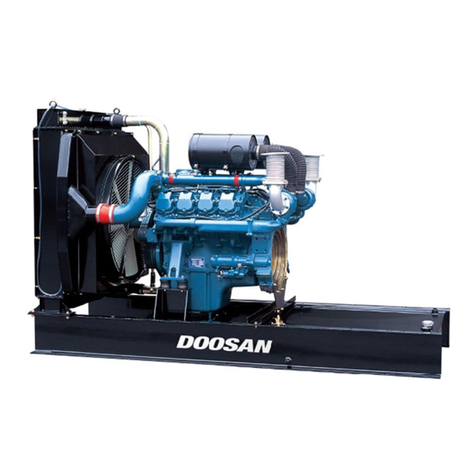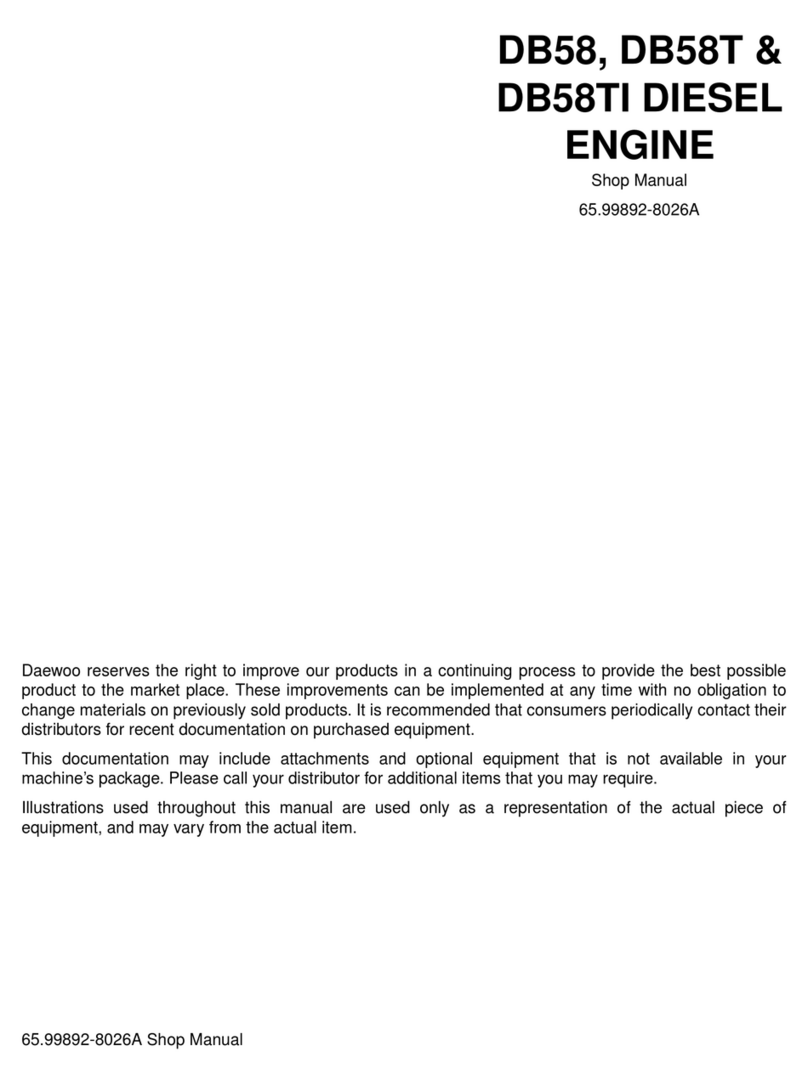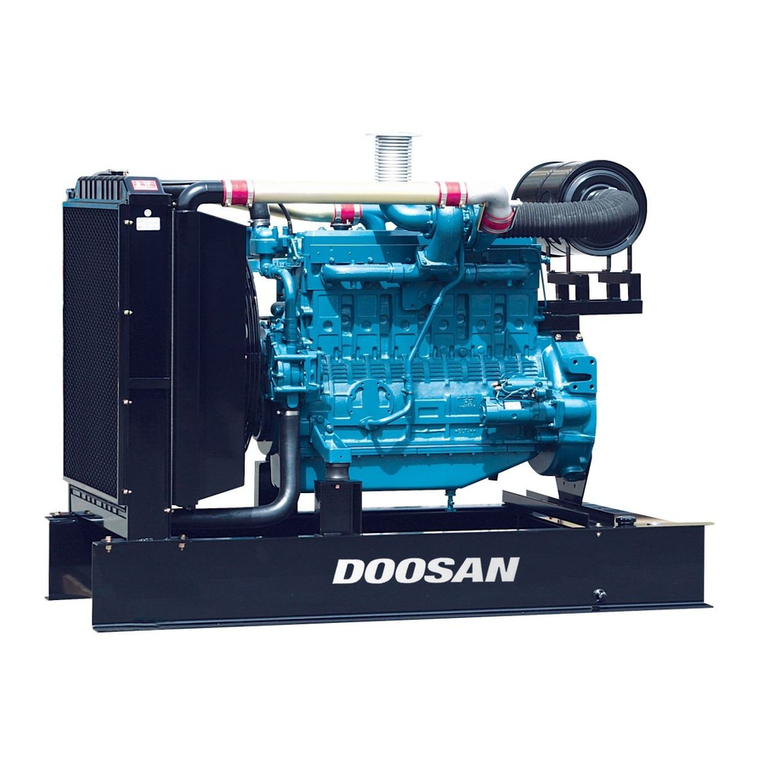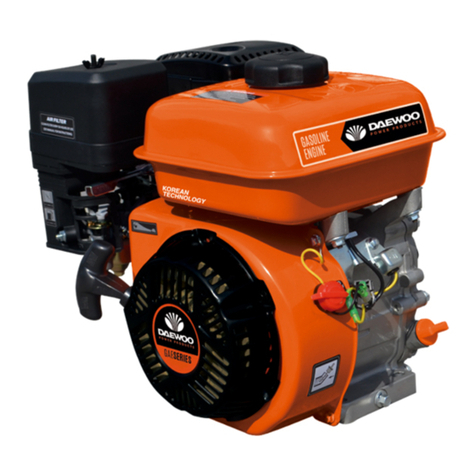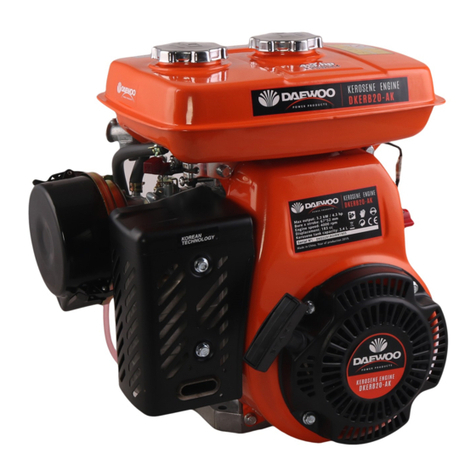
INDEX
1. INTRODUCTION
..................................................................................................................................... 2
2. SAFETY PRECAUTIONS
........................................................................................................................ 2
3. TECHNICAL DATA
.................................................................................................................................. 5
4. OVERALL DIMENSIONS AND INSTALLATION
..................................................................................... 6
5. OPERATION OF DIESEL ENGINE
....................................................................................................... 12
6. PARTS LIST OF DIESEL ENGINE
........................................................................................................ 24
WARRANTY ............................................................................................................................................... 48
1. INTRODUCTION
Thank you for purchasing products from our company.
Recoil-type manual starter and optional electric starter. Force air cooling system.
The fan cover made of low noise composite steel plate.
Series air cooling, direct injection. 4-stroke diesel engines are such a type engine of saving on
material and energy, The series engines are small, light. They're easy to maintain, and convenient to
move. They are used widely as a power for industrial, agricultural, machinery tool such as irrigation,
spray, rice -transplanting, threshing, grass cutting, soli-sampling, and also used in vibration rammer,
shock rammer, marine engine, light-type transport vehicle, movable-type compressor, light-type
generation set, car washing machine, tillage machinery etc.
This operating manual will tell you how to operate and maintain your series engines. Please read it
before running the enqine for correct operation.
Follow the operating requirement in the manual to keep your engine in best working condition and
make the engine run longer.
lf you have any questions or suggestions about this manual, please contact us or dealer. User
should pay attention to that with the improvement of our products the descripition in this manual
may differ from practical products.
2. SAFETY PRECAUTIONS
Please make sure to follow each precaution carefully.
EXHAUST PRECAUTIONS
• Never inhale exhaust gas, lt contains carbon monoxide, a colorless, odorless and extremely dan-
gerous gas which can cause unconsciousness or death.
• Never operate the engine indoors or in a poorly ventilated area, such as a tunnel or cave, etc.
• Exercise extreme care when operating the engine near people or animals. Keep the exhaust pipe
free of external objects.
REFUELING PRECAUTIONS
• Be sure to stop the engine prior to refueling.
• Do not overfill the fuel tank.
• lf fuel is spilled, wipe it away carefully and wait until the fuel has dired before starting the engine.
• When changing oil, make sure that the fuel cap is secure to prevent spillage.
FIRE PREVENTION
• Do not operate the engine while smoking or near an open flame.
• Do not use the engine around drybrush, twigs, clothes, bags, or other flammable materials
• Keep the engine at least 3 feet (1 meter) away from buildings or other structures.
• Keep the engine away from flammables and other hazardous materials (trash, rags, lubricants,
explosives).
PROTECTIVE COVER
• Place the protective covers over the rotating parts.
lf rotating parts, such as the driving shaft, pulley, belt etc. are left exposed, they are potentially
hazardous. To prevent injury, equip them with protective covers or shrouds.
• Be careful of hot parts.
The muffler and other engine parts become very hot while the engine is running or just after it has
stopped. Operate the engine in a safe area and keep children away from the running engine.
SURROUNDINGS
• Operate the engine on a table, level surface free of small rocks, loase gravel, etc.
• Operate the engine on a level surface.
lf the engine is tilted, fuel spillage may result.
NOTE: Operating the engine at a steep incline may cause seizure due to improper lubrication even
with a maximum oil level.
• Be careful of fuel spillage when transporting the engine.
Tighten the fuel tank cap securely and close the fuel strainer cock before transit.
• Do not move the engine while it is in operation.
• lf the engine will be transported over a long distance or on rough roads, drain fuel off from fuel
tank to prevent fuel leakage.
PRE-OPERATION CHECKS
• Carefully check fuel pipes and joints for looseness and fuel leakage. Leaked fuel creates a
potentially dangerous situation.
• Check bolts and nuts for looseness.
A loose bolt or nut may cause serious engine trouble.
• Check the engine oil and refill if necessery.
• Check the fuel level and refill if necessary. Take care not to overfill the tank.
• Wear snug fitting working clothes when operating the engine.
Loase aprons, towels, belt, etc., may be caught in the engine or driving train causing a dangerous
situation.
3. TECHNICAL DATA
DDERB170F
Engine type: Single cylinder, vertical, 4 stroke, air-cooled, direct-injection
Max power: 3.36 kW / 4.5 hp
Rated power: 2.98 kW / 3.4 hp
Max speed: 3600 rpm
Displacement: 211 cc
Bore*stroke: 70*55 mm
Fuel tank capacity: 2.5 L
Oil capacity: 0.75 L
Starting system: Manual
Net weight: 26 kg
DDERB178F
Engine type: Single cylinder, vertical, 4 stroke, air-cooled, direct-injection
Max power: 4.9 kW / 6.6 hp
Rated power: 3.8 kW / 5.1 hp
Max speed: 3600 rpm
Displacement: 296 cc
Bore*stroke: 78*62 mm
Fuel tank capacity: 3.5 L
Oil capacity: 1.1 L
Starting system: Manual
Net weight: 35 kg
DDERB186F
Engine type: Single cylinder, vertical, 4 stroke, air-cooled, direct-injection
Max power: 7.34 kW / 9.85 hp
Rated power: 5.7 kW / 7.75 hp
Max speed: 3600 rpm
Displacement: 406 cc
Bore*stroke: 86*70 mm
Fuel tank capacity: 3.5 L
Oil capacity: 1.65 L
Starting system: Manual
Net weight: 48 kg
4. OVERALL DIMENSION AND INSTALLATION lnstallation
(1) There must be a light stationary foundation for diesel engine to avoid vibration or movement
when the engine is running.
(2) Be sure that the center position of output axle is correct.
(3) Check whether calibration between axle hole of belt wheel and keyway shaft is correct and
whether the tighten screw nut of belt wheel is tightened up.
(4) When the engine is matched with other belt-driving machine, the diameter of driving wheel must
be in harmony with the speed of diesel engine and the size of axle wheel of the equipped machine.
Otherwise it will directly influence working condition of diesel engine, the life of the engine and the
efficiency of working machine.
The diameter of driving wheel (belt wheel) can be calculated as follow,
(5) Be sure that belt is tightened properly.
lf the belt is fixed too tight, the engine will be overloaded while starting, the belt be drawn longer,
and the engine may be damaged.
lf the belt is fixed too loose, the belt will slip at high speed and high load.
1-2.3 Allowed distance between belt wheel and engine
The V-axle wheel groove should be close to the engine as possible as it can be, the allowed value of
Lis listed in table 1-1
Note: The meaning of L is shown in figure above. Please contact dealer if you have any questions.
Table 1-1
1-2.4 Crank shaft (Original type) driving angle must be less than 120º, see Fig 1-1 1-2.5 Tilt
1
The tilt must be kept within the allowed value shown in Fig. 1-2
1-2.6 Please contact our dealer about electric circuit
We recommend to use accumulators (Rated 20 hours) shown in table 1-2.
1-3 Connecting sizes
1-3.1 Sizes of output shaft
